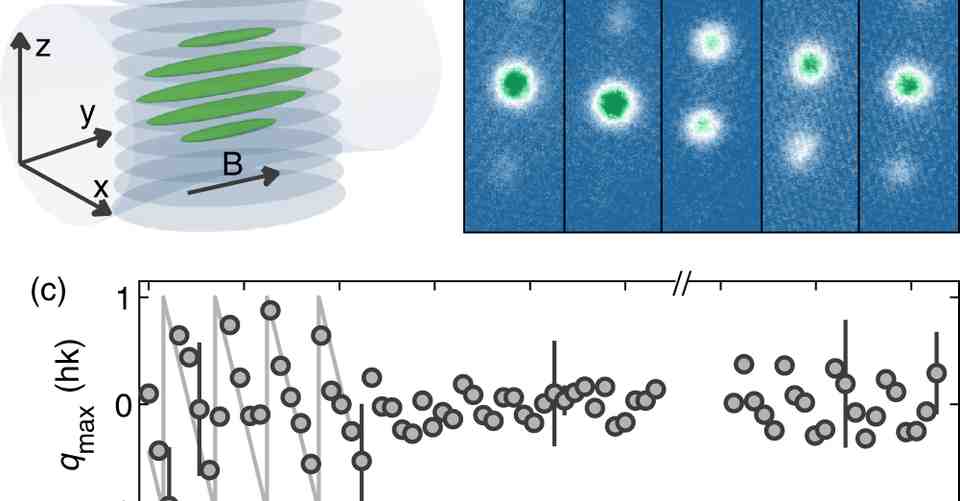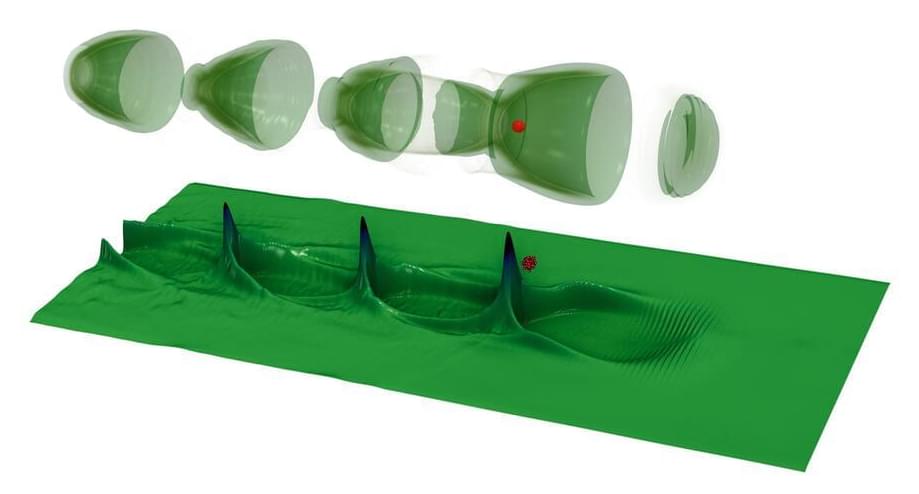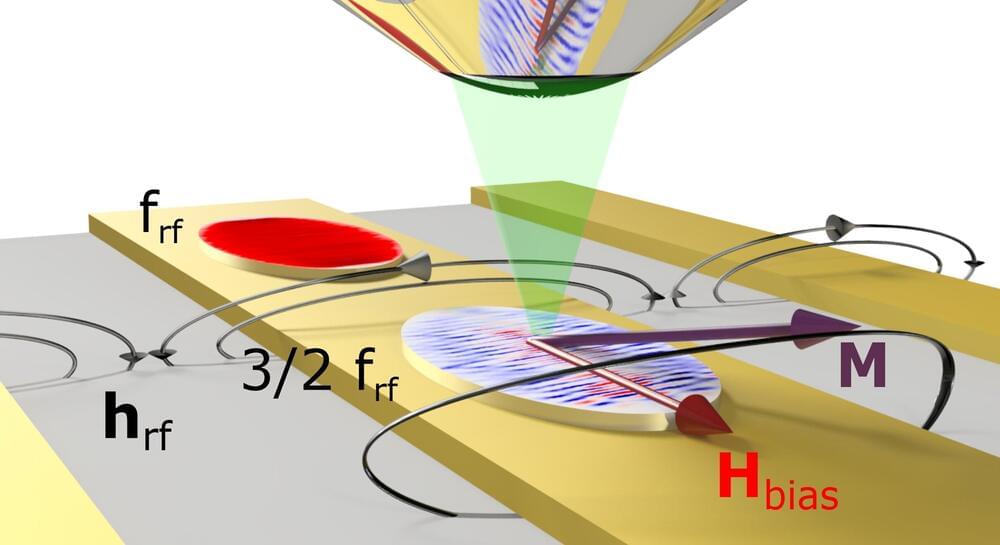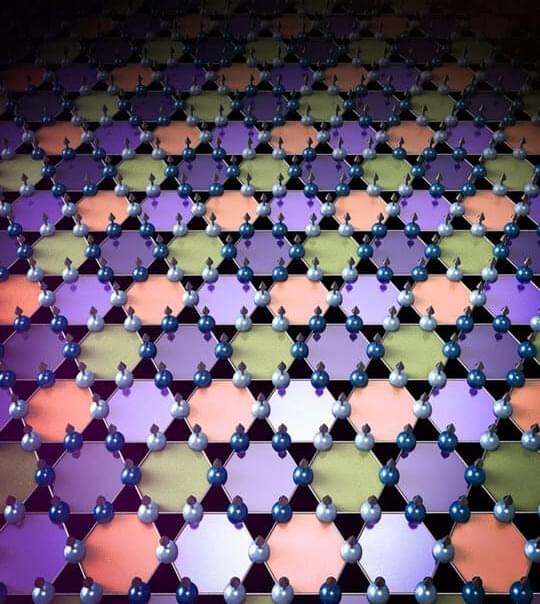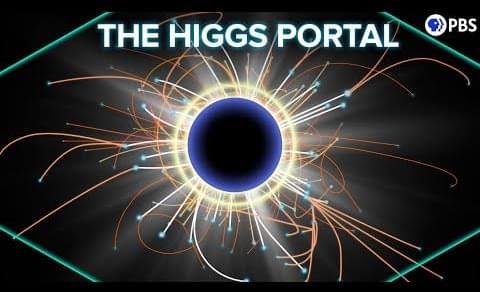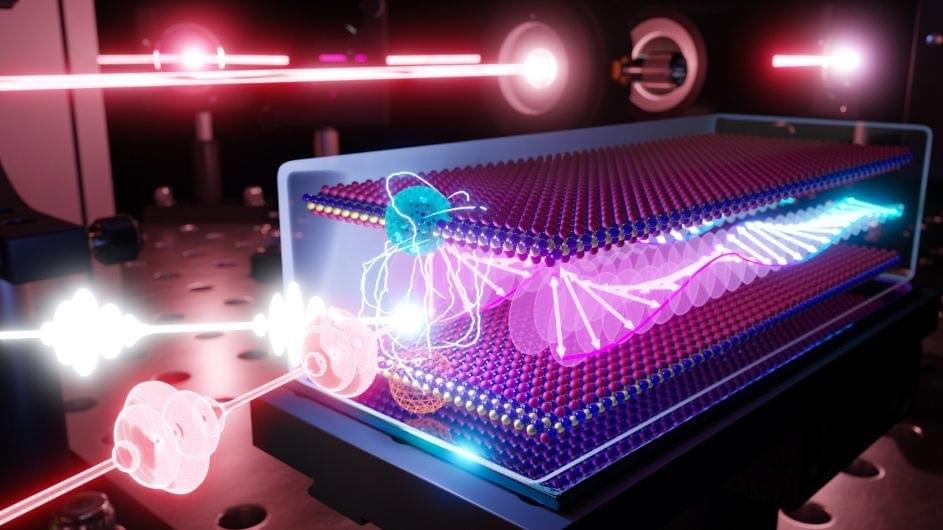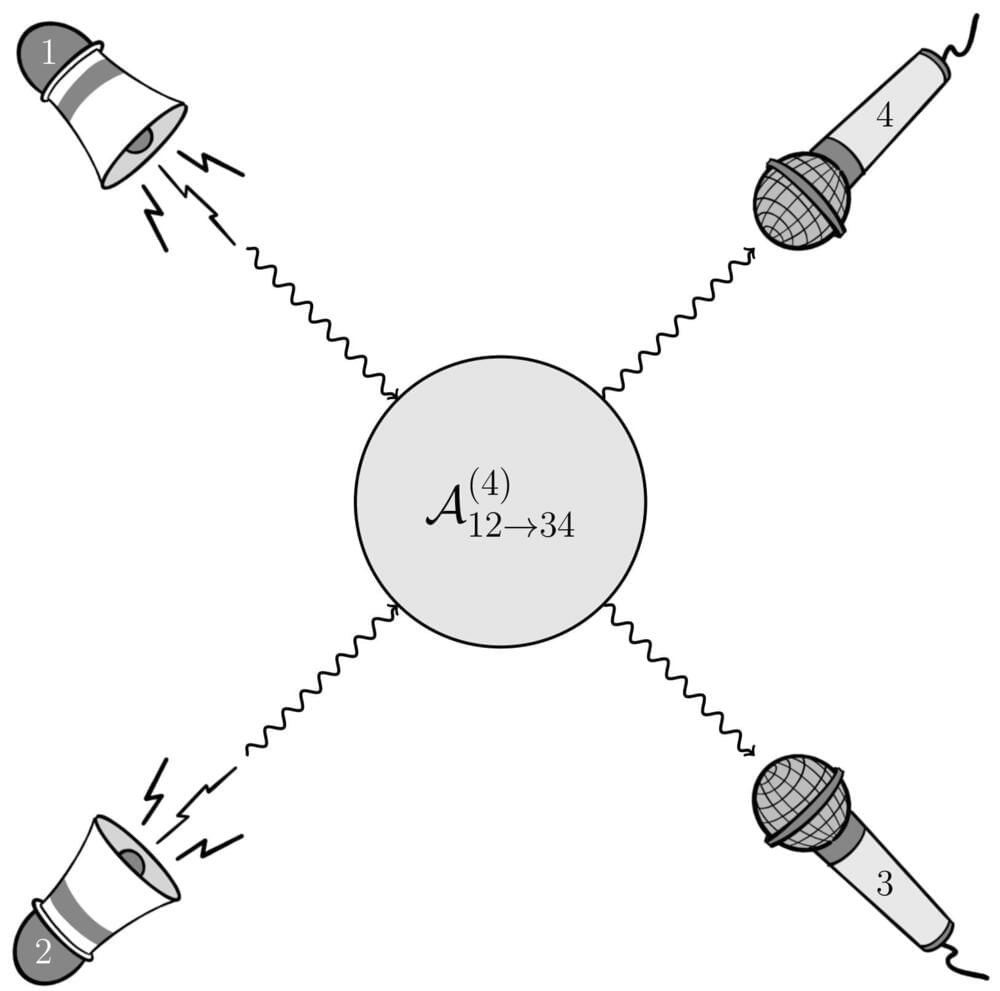Three-dimensional quantum gases of strongly dipolar atoms can undergo a crossover from a dilute gas to a dense macrodroplet, stabilized by quantum fluctuations. Adding a one-dimensional…
Category: particle physics – Page 296
Four meteorites in northwest Africa were found to contain mysterious hexagonal diamonds that don’t naturally occur on Earth. Essentially, scientists exploring the contents of the space rocks discovered extraterrestrial materials, if you will, alien diamonds. According to Alan Salek, a member of the team that discovered the materials, “some people in the field doubted the existence of this material.” As with regular diamonds, hexagonal diamonds are made of carbon, but their atoms are arranged hexagonally rather than cubically.
The first hexagonal diamonds were recorded in meteorites in the United States and India in the 1960s and were dubbed lonsdaleite. The previously discovered crystals, however, were so small – only nanometres wide – that their hexagonality could not be confirmed. A powerful electron microscope was used by Salek and his colleagues to examine 18 meteorite samples in search of larger crystals. One of them was from Australia, and the other three were from northwestern Africa. It was found that four of the African meteorites contained hexagonal diamonds, some measuring up to a micrometer – about 1,000 times larger than anything previously discovered.
In this way, the team was able to confirm the hexagonal structure’s unusual characteristics. Salek says that now that they have larger crystals, they can get a better understanding of how they form and maybe replicate that process. Scientists are interested in Lonsdaleite since it might have even more industrial potential as a result of its theoretical hardness being stronger than a regular diamond. High-end saw blades, for instance, already contain regular diamonds.
An optical tweezer array is a staple tool for trapping and controlling the positions of atoms in quantum research applications. Interfering, counterpropagating lasers can perform a similar function by creating “optical lattices.” The former tool suffers from having a potential that varies from site to site, limiting the ability of the atoms to move around. The latter tool creates uniform potentials but restricts the shape to some predefined geometry. Now Zoe Yan of Princeton University and her colleagues show that they can create arbitrarily shaped, reconfigurable 2D atom lattices with uniform potentials [1]. Such traps are desirable for simulating quantum spin interactions in electronic models and exploring the behaviors of atoms in systems with complex topologies.
Yan and her colleagues create their atom arrays by sequentially adding lines of atoms until the lattice is complete. They load up to 50 cold lithium atoms into an optical tweezer. They then generate the first line of their array using a vibrating transducer, which can break up and deflect a single laser beam such that it turns into a line of light spots. Subsequent lines of the array are made with another transducer, programmed to flash on and off like a strobe light, with each line illuminated for a fraction of the strobe cycle. The result is a time-averaged 2D trap potential, where each site is independently controlled, overcoming the nonuniformity problem that previous experiments with optical tweezer arrays experienced.
Using their technique, the team has created rectangular, triangular, and octagonal-ring-shaped arrays of atoms, which they say could be used to explore the behaviors of exotic states of matter, such as chiral spin liquids.
Over the past few decades, physicists and engineers have been trying to create increasingly compact laser-plasma accelerators, a technology to study matter and particle interactions produced by interactions between ultrafast laser beams and plasma. These systems are a promising alternative to existing large-scale machines based on radio-frequency signals, as they can be far more efficient in accelerating charged particles.
While laser-plasma accelerators are not yet widely employed, several studies have highlighted their value and potential. To optimize the quality of the accelerated laser beam produced by these devices, however, researchers will need to be able to monitor several ultra-fast physical processes in real-time.
Researchers at the Weizmann Institute of Science (WIS) in Israel have recently devised a method to directly observe laser-driven and nonlinear relativistic plasma waves in real-time. Using this method, introduced in a paper published in Nature Physics, they were able to characterize nonlinear plasma at incredibly high temporal and spatial resolutions.
Strong alternating magnetic fields can be used to generate a new type of spin wave that was previously just theoretically predicted. This was achieved for the first time by a team of physicists from Martin Luther University Halle-Wittenberg (MLU). They report on their work in Nature Communications and provide the first microscopic images of these spin waves.
The basic idea of spintronics is to use a special property of electrons—spin—for various electronic applications such as data and information technology. The spin is the intrinsic angular momentum of electrons that produces a magnetic moment. Coupling these magnetic moments creates the magnetism that could ultimately be used in information processing. When these coupled magnetic moments are locally excited by a magnetic field pulse, this dynamic can spread like waves throughout the material. These are referred to as spin waves or magnons.
A special type of those waves is at the heart of the work of the physicists from Halle. Normally, the non-linear excitation of magnons produces integers of the output frequency—1,000 megahertz becomes 2,000 or 3,000, for example.
Physicists have discovered a material in which atoms are arranged in a way that so frustrates the movement of electrons that they engage in a collective dance where their electronic and magnetic natures appear to both compete and cooperate in unexpected ways.
Led by Rice University physicists, the research was published online today in Nature. In experiments at Rice, Oak Ridge National Laboratory (ORNL), SLAC National Accelerator Laboratory, Lawrence Berkeley National Laboratory (LBNL), the University of Washington (UW), Princeton University and the University of California, Berkeley, researchers studied pure iron-germanium crystals and discovered standing waves of fluid electrons appeared spontaneously within the crystals when they were cooled to a critically low temperature. Intriguingly, the charge density waves arose while the material was in a magnetic state, to which it had transitioned at a higher temperature.
“A charge density wave typically occurs in materials that have no magnetism,” said study co-corresponding author Pengcheng Dai of Rice. “Materials that have both a charge density wave and magnetism are actually rare. Even more rare are those where the charge density wave and magnetism ‘talk’ to each other, as they appear to be doing in this case.”
For more information please go ➼ https://nordvpn.com/spacetime.
PBS Member Stations rely on viewers like you. To support your local station, go to: http://to.pbs.org/DonateSPACE
Sign Up on Patreon to get access to the Space Time Discord!
https://www.patreon.com/pbsspacetime.
The discovery of the Higgs boson ten years ago in the Large Hadron Collider was the culmination of decades of work and the collaboration of 1000s of brilliant and passionate people. It was the final piece needed to confirm the standard model of particle physics as it now stands. There are still many outstanding questions — for example, it seems like nothing in the standard model can explain what dark matter is. So the discovery of the Higgs wasn’t the end of particle physics — but it may be the way forward. Many physicists think that the secret to finding the elusive dark matter particle will come by studying the Higgs. In fact, the first tantalizing evidence is already in.
Check out the Space Time Merch Store.
https://www.pbsspacetime.com/shop.
Sign up for the mailing list to get episode notifications and hear special announcements!
New research reveals that spinning quasiparticles, or magnons, light up when paired with a light-emitting quasiparticle, or exciton, with potential quantum information applications.
All magnets contain spinning quasiparticles called magnons. This is true of all magnets from the simple souvenirs hanging on your refrigerator to the discs that give your computer memory storage to the powerful versions used in research labs. The direction one magnon spins can influence that of its neighbor, which in turn affects the spin of its neighbor, and so on, yielding what are known as spin waves. Spin waves can potentially transmit information more efficiently than electricity, and magnons can serve as “quantum interconnects” that “glue” quantum bits together into powerful computers.
Although magnons have enormous potential, they are often difficult to detect without bulky pieces of lab equipment. According to Columbia researcher Xiaoyang Zhu, such setups are fine for conducting experiments, but not for developing devices, such as magnonic devices and so-called spintronics. However, seeing magnons can be made much simpler with the right material: a magnetic semiconductor called chromium sulfide bromide (CrSBr) that can be peeled into atom.
Few things in the Universe keep the beat as reliably as an atom’s pulse.
Yet even the most advanced ‘atomic’ clocks based on variations of these quantum timekeepers lose count when pushed to their limits.
Physicists have known for some time that entangling atoms can help tie particles down enough to squeeze a little more tick from every tock, yet most experiments have only been able to demonstrate this on the smallest of scales.
Not everything needs to be seen to be believed; certain things are more readily heard, like a train approaching its station. In a recent paper, published in Physical Review Letters, researchers have put their ears to the rail, discovering a new property of scattering amplitudes based on their study of sound waves through solid matter.
Be it light or sound, physicists consider the likelihood of particle interactions (yes, sound can behave like a particle) in terms of probability curves or scattering amplitudes. It is common lore that when the momentum or energy of one of the scattered particles goes to zero, scattering amplitudes should always scale with integer powers of momentum (i.e., p1, p2, p3, etc.). What the research team found however, was that the amplitude can be proportional to a fractional power (i.e., p1/2, p1/3, p1/4, etc.).
Why does this matter? While quantum field theories, such as the Standard Model, allow researchers to make predictions about particle interactions with extreme accuracy, it is still possible to improve upon current foundations of fundamental physics. When a new behavior is demonstrated—such as fractional-power scaling—scientists are given an opportunity to revisit or revise existing theories.
